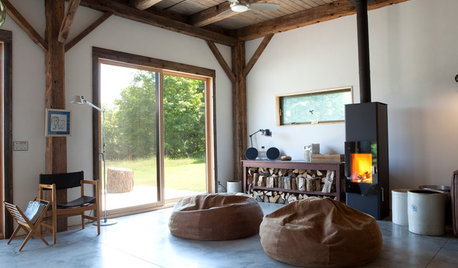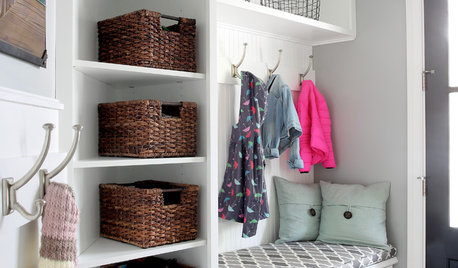2. HYDROPONIC SYSTEMS
There are various hydroponic setups that are grouped into the general terms passive and active systems. Passive hydroponics involves supplying the nutrient by hand whereas active systems use a pump. A discussion follows. (Note: to view the graphics go to the link below and click on the files identified in the text).
PASSIVE SYSTEMS
With passive systems nutrient sits in a reservoir and is absorbed by the medium or wick by capillary action, which subsequently supplies that nutrient to the roots. Although air spaces around the roots supply root zone oxygen, passive systems are usually too wet. Thus, air pumps may be used. Two types of passive systems include pot culture and the wick method.
Pot culture
Pot culture, the simplest hydroponic method, involves filling a pot with medium and supplying nutrient through a saucer. (Pot.psd).
Wick
With the wick method, medium filled containers contain a wick which goes down into a nutrient solution (Wick.psd). A candle, lantern wick, or nylon rope can be used (regular rope may rot). Small plants work best with this system since large ones use up nutrient too fast. Use of more than one wick may counteract drying, however, as well as provide support to large plants.
ACTIVE SYSTEMS
Aeroponics
Aeroponics systems use no medium suspended roots are misted with nutrient (Aero.psd). Fog Feed Technique (FFT) is the same technique as Aeroponics with a smaller droplet size. Plants set up a strong root structure in the mist setup - if unchecked they can grow into the main nutrient tank and clog the pump. Because large amounts of oxygen are supplied to the roots cuttings root easily. This is an efficient and quick system for growing short term plants such as lettuce, but not long term plants. Importantly, roots dry quickly if spray cycles are interrupted due to power failure or a clogged sprayer. Sprinkler types of sprayers may block easier than an impingement type.
Drip
With a drip system nutrient solution is dripped onto plants using a drip line. (Drip.psd). Because plants are in pots or trays with individual drippers one can adjust the amount of solution per plant. The nutrient can be collected for to use again (recovery or closed system) or not collected (non recovery, run to waste, or open system). With a recovery system, a drip tray is placed under the plants, and the solution is sent back to the reservoir. Two forms of drip culture are bag culture and the Dutch pot method.
Bag culture is a run to waste system. Nutrient may be used or water with controlled-release fertilizer may be placed in the bag. Bags can be placed horizontally (Bag1.psd) or vertically (Bag2.psd). Vertical bags are problematic, however, since they use more water and are erratic in maintaining moisture.
A Dutch pot system (Dutch.psd) involves drip feeding a series of pots that connect to a common drain pipe. The downward pressure created by the drainage line siphons liquid so the roots are not submerged in it.
Ebb and flow (Flood and drain)
With an ebb and flow system nutrient is pumped into an upper tray and drained into a reservoir below (Ebb.psd). The time the pump remains on is called a flood cycle (20-30 minutes); the frequency of which is determined by plant size. At the cycle end the timer shuts the pump off and nutrient solution flows back into the reservoir; a process that draws oxygen into the root zone. When the water has reached a certain level, overflow controls, fittings, pipe, or float switches drain nutrient into the reservoir.
Nutrient Film Technique (NFT)
NFT is a type of hydroponics in which involves a slow but continual flow of nutrient. NFT usually uses no media, and plants can be placed in net pots. Some commercial tomato growers start their plants in Rockwool cubes and place them in the NFT gully. For many years, growers used troughs lined with black plastic on the outside and white on the inside. Currently, growers place the roots in rectangular plastic tubes similar to house guttering. A downward sloping flat-bottomed, sloped channel (gully) or grow tube is used, and nutrient flows into a reservoir below. Capillary matting or air stones supply the oxygen. The continual flow of nutrient is important in hot weather since roots can dry up. During the winter one can turn off the media at night to supply oxygen to the roots.
Raft System (Water culture)
Water culture (Raft.psd) involves placing rooted seedlings into holes in a piece of Styrofoam which floats on nutrient. An air pump supplies oxygen to the roots. Plants that do well with this system include fast growing water loving plants (i.e., lettuce). Net pots may be used with long term plants.
OTHER
Deep Flow Technique (DFT)
DFT (Dft.psd) involves placing roots in a PVC pipe which is flooded with nutrient and gravity drained. A flood cycle duration is 15 minutes on and 15 minutes off. This method is ideal for leafy vegetables. Importantly, nutrient needs to be heavily aerated or the roots drown. Aerated Flow Technique (AFT) a modification of DFT, involves extensive nutrient aeration.
Trough or Trench Culture
Trench hydroponics (Trench.psd) involves using in ground trenches or above ground troughs. Trenches may be narrow or wide for multiple rows of plants; wide trenches recirculate whereas narrow have run-to-waste systems. A perforated drain pipe beneath the medium may be used to help collect the solution. Nutrient is supplied through a drip irrigation system or by hand. This system has applications in poor regions due to its simplicity and low setup costs. Disadvantages include disease control, salt buildup, and the need for close monitoring with shallow beds.
© 2004 Baci













Related Discussions
diy fermentation co2 system
Q
HVAC Zoning dampers vs. 2 systems
Q
Need advice on 2 systems
Q
Question on adding a Rec/Reg unit a 2 circuit system?
Q